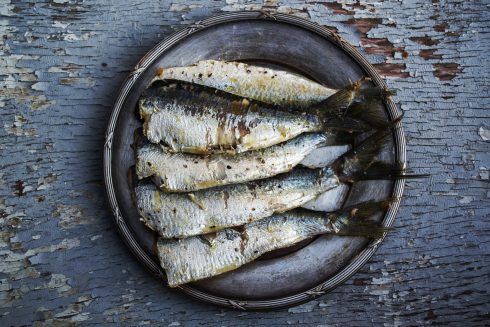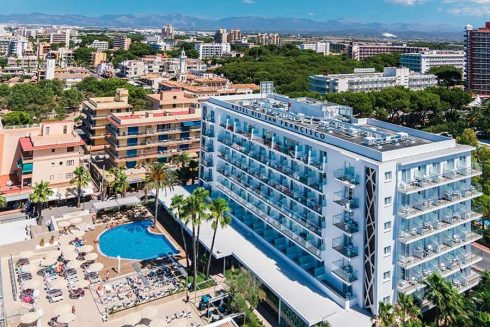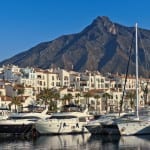IN days of yore, well 1977 to be exact, when I first set foot in Estepona as a fashion photographer, there was only green space between the town and the newly constructed marina.
Now, as a regular visitor, I’m horrified to see how the Costa del Sol’s ‘concrete necklace’ has sprawled almost the whole way from Torremolinos to Sotogrande.
I am sure many of you will remember those golden days of uninterrupted beaches, a few chiringuito bars dotted here and there, and some really cheap bar grub along the A340.
“When we used to get a taxi from Torremolinos, where we lived, to Gibraltar, I remember my mum giving us hankies with cologne as we passed Estepona to mask the smell of the glue made from fish oil.”
Back then, Estepona was a sleepy town comprising about 5,000 residents.
Few tourists wandered its narrow cobbled pathways and no one had a yacht to berth yet.
One long-term local expatriate resident Sonia Longman, 67, recalled how in the 1950s there was practically nothing there apart from a smelly fish factory, where Carrefour is today.
She explained: “When we used to get a taxi from Torremolinos, where we lived, to Gibraltar, I remember my mum giving us hankies with cologne as we passed Estepona to mask the smell of the glue made from fish oil.”
Longman and her sister, who have run the local English bookshop Longmans for decades, started life in the town working on Spanish newspaper, Sol de Espana.
Working under the tutelage of Lord Cowley, who was a direct descendant of the Duke of Wellington, they were given the job of producing an English page within the paper every day.
“We always liked to push the boundaries and even once got reported to the Bishop of Malaga for using a photograph of a sexy girl in a bikini climbing a tree.
“It was in the days of Franco and the editor was summoned to Malaga to receive a dressing down from the Bishop. He got such a ticking off that we were forced to fill all the middle bits of every shot of women in bikinis with black felt pen so it looked like they had bathing suits on!”
She also remembered how – after she moved to the town in the 1960s – her sister’s donkey was ‘towed away’ by the local police for eating flowers in the main square.
“It was taken to the slaughterhouse and my sister had to literally beg the fat local policeman to give her a lift there to rescue it just in time.”
In line with the growth of most of the Costa del Sol, the town and its surrounding area has become a magnet for property developers, estate agents, golfers, professional footballers and television celebrities.
The marina now holds berths for over 250 yachts and the town has become a busy place and boasts around 25,000 people residing there all year round.
A distant cousin of its more affluent neighbour, Marbella, and situated 40 kms from Gibraltar, the town is a good mix of upmarket and package holiday resort.
But what one really notices about Estepona is the fact that it remains resolutely a Spanish town, conserving much of its old part, that is in every way as attractive as that of nearby Marbella, its richer, more affluent cousin.
Historically, Estepona was always seen as the halfway house from Malaga to Gibraltar.
Originally given the title of Estebbuna by the Romans, the town is littered with historic monuments from old Phoenician and Roman burial grounds to splendid castles.
Built on the old Roman road which is now known as the paseo, the town was destroyed in the 15th century and rebuilt by Queen Isabelle and King Ferdinand a century later.
In 1729 Philip V granted the town a charter for 600 families and the town has continued its growth to this day.
The old monuments are still very much in evidence from the scattering of watchtowers warding off the Moorish invaders to the Arab-built clock tower and the 16th century castle ruins, which are worth a visit.
The best is the old Franciscan monastery which is now the Church of our Lady of Redemption.
If you ask nicely you may still be allowed to walk to the top of the tower and enjoy the vista of the whole town and mountains inland.
Modern Estepona still maintains its ancient ambience and does not seem overwhelmingly saturated with foreign investment.
Unlike Fuengirola and its fish alley, there are only a handful English bars in the old town and along the paseo.
Local Spanish bars take precedence and there is plenty of good tapas to be had at very cheap
prices.
The town also boasts one of the best beaches on the coast, the Playa de la Rada, which won a prestigious EC blue flag in 2009.
Lining this golden stretch of coastline are a number of well known chiringuitos that have been established since the mid sixties.
In the summer, those in the know will flock to this beach ahead of its mainstream counterparts down the road in Marbella.
As holidaymakers fight to grab some limited towel space in Puerto Banus, Estepona’s sun worshippers often have enough space to draw up their own.
Others, such as Pauline Olivera prefer Playa del Christo, just up the coast. “It is one of the only unspoilt little bays left on the coast,” she says. “It is so nice I chose to get married there.”
However, not only is the town great for sunseekers but it also serves up a storm for fans of quality sea food.
Even now, more than 50 small fishing boats leave the calm waters in the early hours, coming back laden with their catches.
There are certainly a few gems to be had along the paseo where a delicious three-course lunch will set you back just 15 Euros with a carafe of wine to boot.
I remember frequently visiting one of the most famous restaurants that was situated outside of Estepona called the Yellow Book.
This alternative hangout was based around the notorious drawings of one local artist which had to be censored for their explicit content.
While they didn’t leave anything to the imagination famous guests included Michael Parkinson, Jimmy Tarbuck and Ronnie Corbett.
If you are celebrity-spotting today, comedian Frank Carson has a house near the marina while the much-loved Cilla Black often pops over.
My old favourite, wrinkly rocker himself Rod Stewart used to live just a few minutes drive away towards the Casares road.
These days, however, you are more likely to bump into footballers trying to improve their handicap on a golfing break at El Paraiso golf course.
Nevertheless, fond memories often come from our younger, more heady days and we must sometimes embrace progress, even if it is at the expense of cultural heritage.
Yet many of Estepona’s old remnants remain intact – a stroll through the old town, past the orange tree lined plazas will still invoke images of how life was some 35 years ago.
Just don’t go wandering too far as it may just bring you back into modern times.









Rod Stewart lived just past the puerto. My late friend Jesus told me one afternoon in the late 70s Rod & George Best and a Rolls Royce loaded with girls turned up at the Ibiza Bar of fond memory & partied the day away.
Oh my yes, how much it has changed….I much preferred Marbella in the 80’s when Rod, Elton, and many famous people hung out there and it wasn’t the concrete jungle that it is today. And the Yellow Book restaurant, oh my ,,,, they had the best mushroom soup I have ever tasted and what a charming and wonderful restaurant it was. Gone are the days, but thankfully the memories last a lifetime. Marbella / Puerto Banus, I miss you !!!